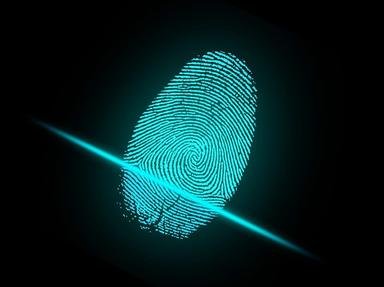Quiz Answer Key and Fun Facts
1. What does the term 'forensic' mean?
2. When two objects touch, there is a transfer of material from one to the other. This trace evidence is the basis of forensic science. What is the idea known as?
3. Forensic anthropology involves the retrieval and identification of human remains. A skeleton provides a lot of information about the deceased. Which of the following is not able to be deduced from a modern human skeleton?
4. If you know what to look for, you can tell a male from a female skeleton. Which of the following statements is not true?
5. Forensic odontology involves the study of teeth. When old skeletons are found, the teeth are an important source of information. In such cases, which of the following statements is true?
6. When identifying victims of disasters, such as plane and train crashes, approximately 93 percent of identifications are made on the basis of which characteristic?
7. Forensic entomology involves the study of insects. Insects are a very reliable indicator of post-mortem interval (the estimate of time since death). When and where was the first recorded application of forensic entomology?
8. DNA (deoxyribonucleic acid) is the genetic material in our cells which controls heredity and plays a large role in determining our physical characteristics. Which of the following statements is *not* true?
9. Britain's experience with DNA databases has provided some interesting statistics. Based on UK data, which of the following statements is not true?
10. In 1984, Sir Alec Jeffreys developed the first DNA profiling ('genetic fingerprinting') test. Its first use to solve a crime occurred in England. It identified Colin Pitchfork as the murderer of two young girls in Narborough in the English Midlands. In which year did this occur?
Source: Author
MotherGoose
This quiz was reviewed by FunTrivia editor
rossian before going online.
Any errors found in FunTrivia content are routinely corrected through our feedback system.

